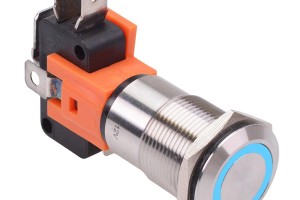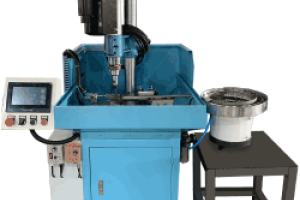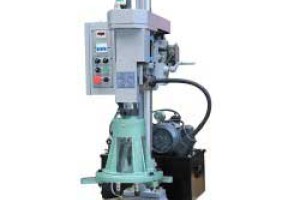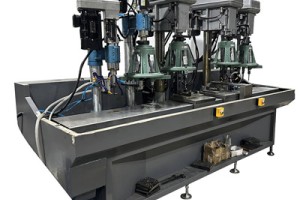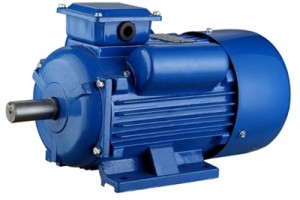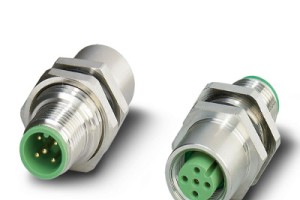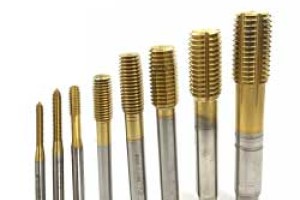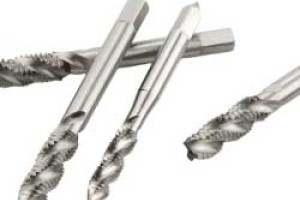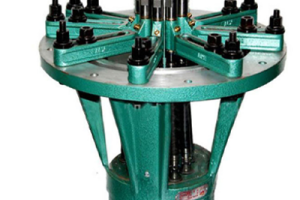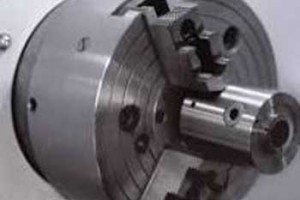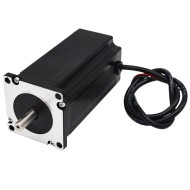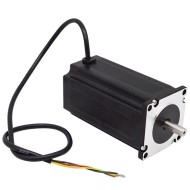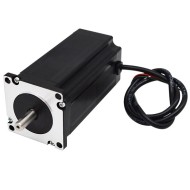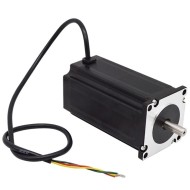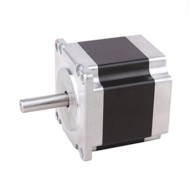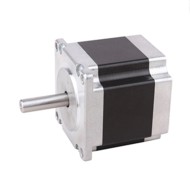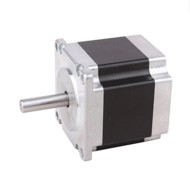









- Stock: In Stock
- Model: SCJ009394
- SKU: SCJ009394
Ask a Question About This Product
- Description
Nema 23 Stepper Motor, 3 Phase, 5.3A, 0.9N·m
Brief
Description
Industral 3 phase permanent magnet stepper motor with 3 lead wires is convenient to adjust the speed, long service life and low maintenance cost.
Physical Specification
- Model Number: SOCOJE-FY56TM530A
- Flanged Size: 57 x 57mm (Nema 23)
- Motor Length: 54mm
- Shaft Diameter: 8mm
- Number of Leads: 3 wire
- Weight: 0.7kg
Electrical Specification
- Motor Type: Bipolar Stepper
- Step Angle: 1.8°
- Rated Current: 5.3A
- Holding Torque: 0.9 N·m (90 N·cm, 127.5 Oz.in)
- Phase Resistance: 0.35Ω
- Phase Inductance: 1.1mH
- Rotor Inertia: 300g·cm2
Dimensions (Unit: mm)
L=54mm

Wiring Diagram

Speed-Torque Curve Diagram

Details

Tips: Difference between unipolar stepper motor and bipolar stepper motor
The bipolar stepper motor uses eight transistors to drive two sets of phases. The number of transistors in a bipolar motor drive circuit is twice that of a unipolar drive circuit. The four lower-end transistors are usually directly driven by a microcontroller, and the upper-end transistors require a higher-cost upper-end drive circuit.
The main difference between a high torque unipolar stepper motor and a bipolar stepper motor is the connection. The motor structure of the unipolar drive circuit contains two sets of coils with middle taps, and the whole motor has a total of six wires connected to the outside world. The bipolar drive circuit can drive a four-wire or six-wire motor at the same time. Although a four-wire motor can only use a bipolar drive circuit, it can greatly reduce the cost of mass production applications.
In addition, they are also different in voltage. The transistors of the bipolar drive circuit only need to bear the motor voltage, while the unipolar drive circuit needs a clamp circuit to drive.
Documents
- Reviews
